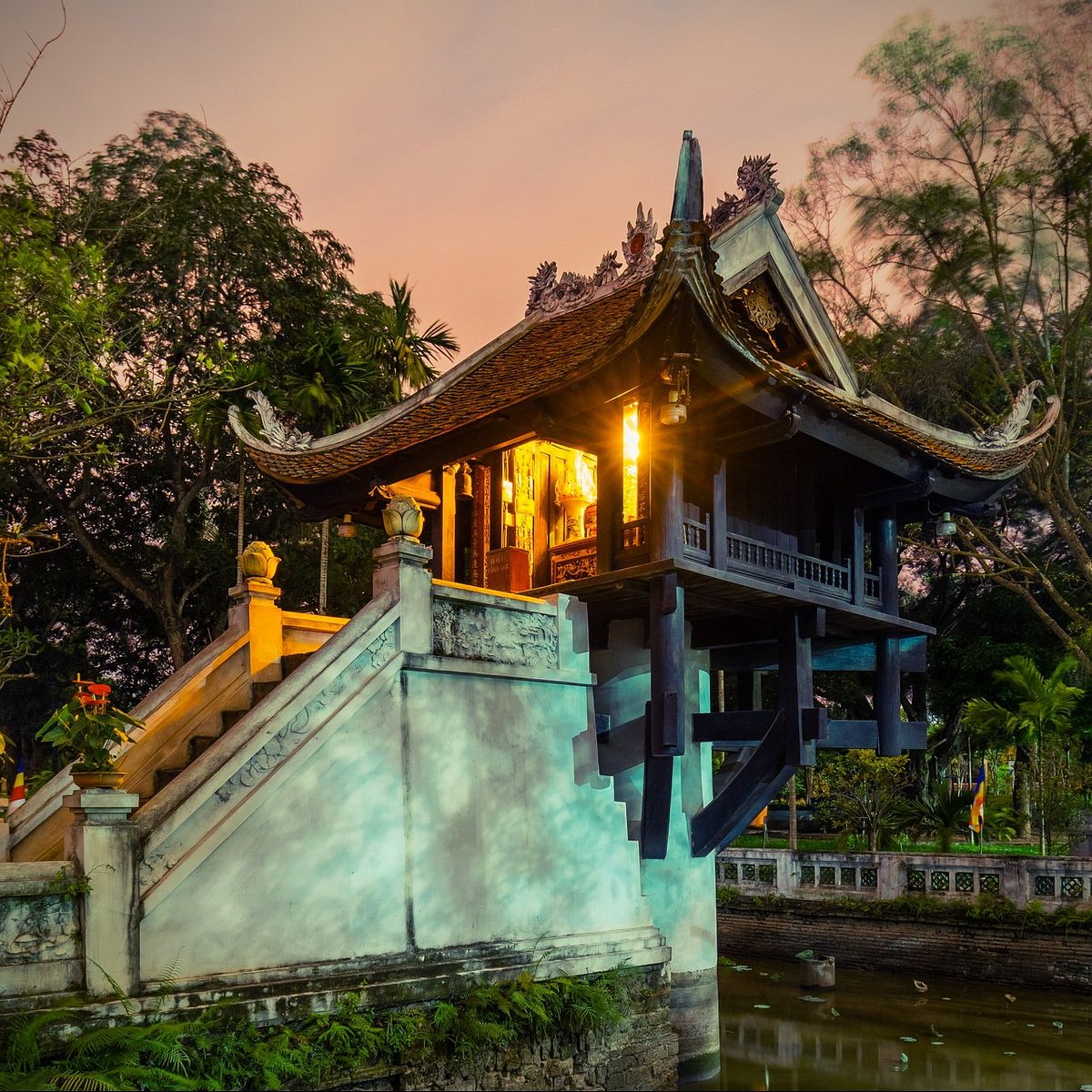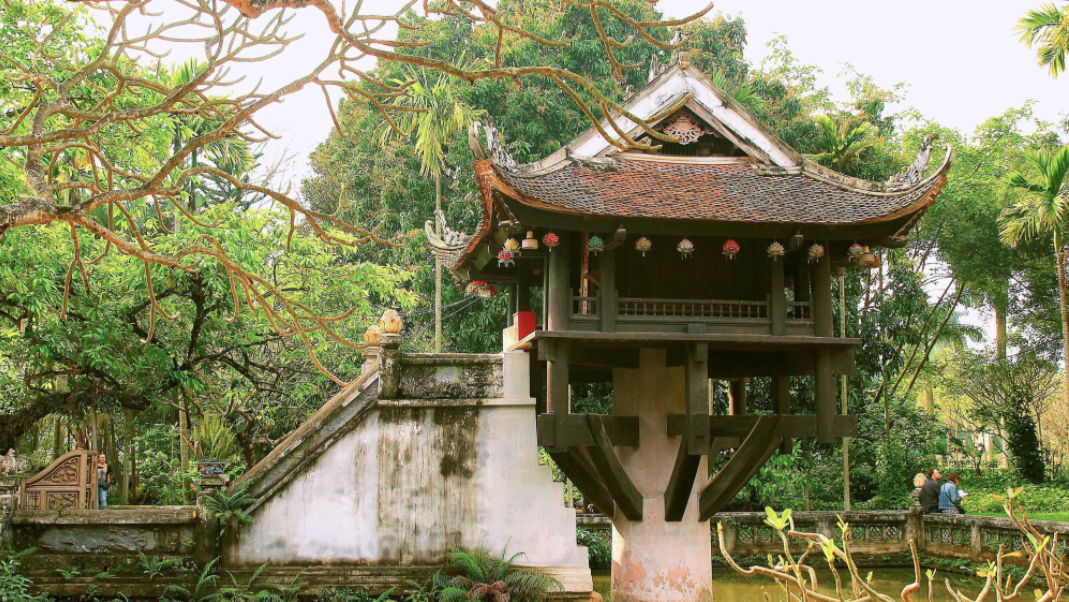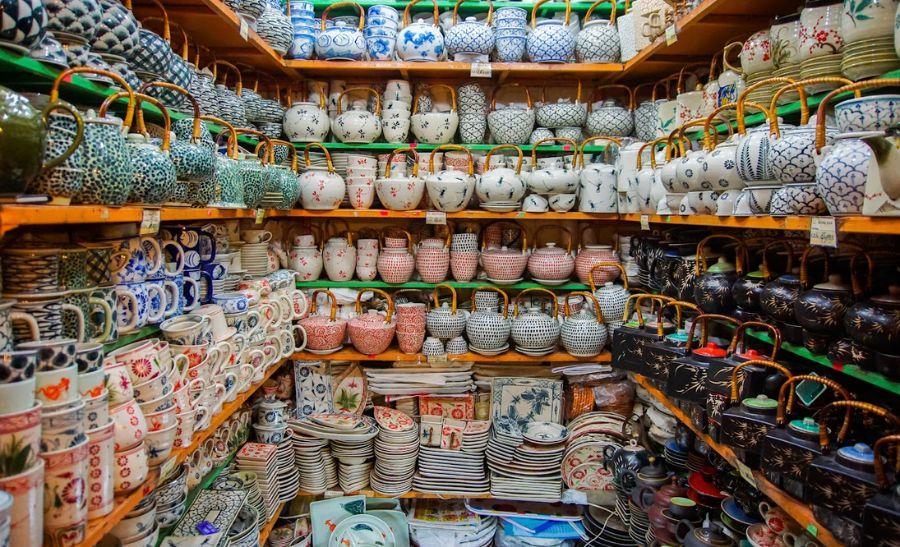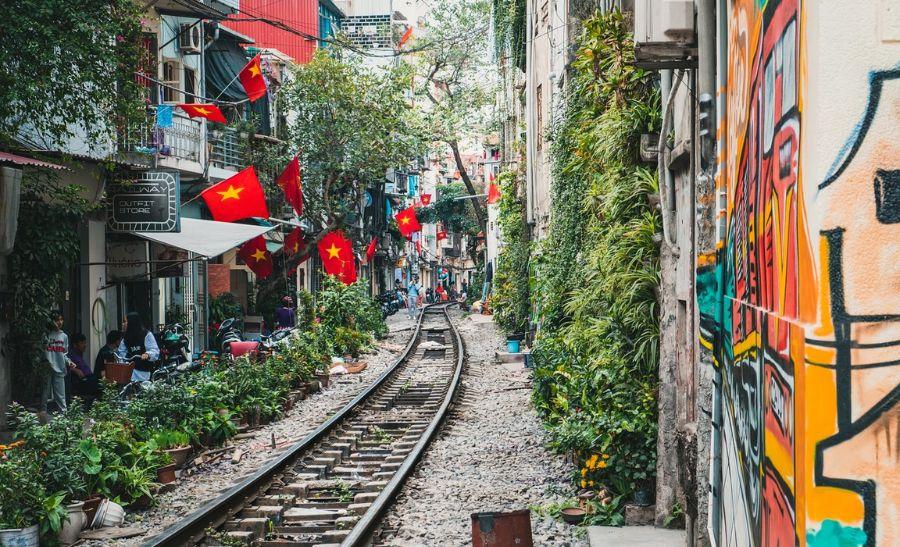Share
Why the One-Pillar Pagoda Is Hanoi’s Most Iconic Sights
Content summary
Discover the One-Pillar Pagoda in Hanoi
Tucked inside the Ho Chi Minh Mausoleum complex, the One-Pillar Pagoda is one of Hanoi’s most famous religious landmarks. Though small in size, its unique lotus-shaped design and thousand-year history have made it a must-see for visitors curious about Vietnamese culture and spirituality. Located in Ba Dinh District and within Ho Chi Minh Mausoleum Complex, this symbolic pagoda is just a short ride or walk from the Old Quarter, making it easy to include in your Hanoi itinerary.

The History Behind the One-Pillar Pagoda
The One-Pillar Pagoda was originally built in 1049 under the rule of Emperor Lý Thái Tông. According to legend, the emperor dreamt of the Goddess of Mercy sitting on a lotus flower and handing him a son. Not long after, his queen gave birth. As an expression of gratitude, the emperor ordered the construction of a pagoda rising from a lotus pond, just as he had seen in the dream.
Over the centuries, the pagoda has been rebuilt multiple times. It was destroyed during the French withdrawal in 1954, then restored in 1955 based on its original Nguyễn-era design. Today, what stands is a near-perfect recreation of that historical structure and remains a symbol of both Vietnamese heritage and Buddhist devotion.

Why It’s Architecturally Unique
What makes the One-Pillar Pagoda stand out is its striking architecture. The wooden temple is built atop a single stone pillar about 4 meters high and 1.2 meters in diameter, giving the impression that it’s floating above the lotus pond below. The layout is meant to resemble a blooming lotus flower, which is a powerful symbol in Buddhism representing purity and enlightenment.

Above the small sanctuary, the curved roof is topped with a design featuring two dragons facing a moon—an ancient motif representing harmony and spiritual protection. For many Vietnamese, the structure is more than just a pagoda—it’s a sacred place of blessings and a national treasure.
How to Visit the One-Pillar Pagoda
The One-Pillar Pagoda is open daily from 7:00 AM to 6:00 PM. Entry is free for Vietnamese citizens, while foreign visitors pay a modest entrance fee of 25,000 VND. It’s best to arrive in the early morning or late afternoon when the area is quieter and the light is softer for photos.

One Pillar Pagoda, Hanoi – Inside
Since the pagoda is located within the Ho Chi Minh Mausoleum complex, you can visit multiple important landmarks in one stop. From Quiri Hostel in the Old Quarter, you can easily take a GrabBike, taxi, or even walk if you’re up for it. Once inside the complex, the One-Pillar Pagoda is just a short stroll from the main square.
Make sure to dress modestly—shoulders and knees should be covered out of respect for the religious setting. You’ll also be asked to remain quiet and respectful, especially when monks or worshippers are present.
Its Role in Vietnamese Spiritual Life
The One-Pillar Pagoda remains an active place of worship. You’ll often see local residents offering incense and prayers, especially during important Buddhist holidays like Vu Lan or Vesak. While many tourists come for the architecture and legend, for locals it’s still a spiritual retreat.

In 1962, the pagoda was officially recognized as a national historic monument. Later in 2012, the Asian Records Organization awarded it the title of “most unique architectural pagoda in Asia.” This level of recognition only reinforced its place as one of the most important cultural relics in Vietnam.
What to See Nearby
The One-Pillar Pagoda is located near several other important Hanoi landmarks. After your visit, you can continue on to the Ho Chi Minh Mausoleum, Presidential Palace, or the serene gardens nearby. If you’re exploring Hanoi’s historical core, the Temple of Literature and the Thăng Long Imperial Citadel are just a few minutes away by motorbike or taxi.
Many travelers spend half a day in this area soaking up the city’s deep political and spiritual roots. Whether you’re interested in architecture, photography, or cultural history, the One-Pillar Pagoda is a key stop that adds real depth to your Hanoi experience.
Planning Your Hanoi Trip?
If you’re basing yourself in the Old Quarter, Quiri Hostel Hanoi is a great place to start your journey. We’re located right in the heart of the city, offering cozy rooms, free breakfast, and connections to local tours—including the Ha Giang Loop.
Explore more at: https://quirihostelhanoi.com
Người đăng:
Quiri Hostel
Ngày đăng:
23/07/2025







